Table of Contents
The Camellia Bonsai tree is a flowering plant from the Theaceae family and is known for its attractive white, pink, and red flowers which bloom around fall to spring. The tree is native to many countries as it can be seen growing in the field in places like Taiwan, South Korea, China, and Southern Japan.
The tree can be uniquely identified with the varying colors it displays during its growth stages. The younger branches of the tree are usually purplish brown, but turn grayish-brown as it matures.
It is very easy to grow the Camellia tree as a houseplant or in a landscape or according to the Bonsai specimen. In all of these options, growing Camellia as a Bonsai could be the most challenging because not everybody would be familiar with the care requirements that are necessary for the successful cultivation of a Camellia Bonsai. All the requirements will be treated in this guide, as well as some interesting facts about the tree.
General information
| Common name | Camellia |
| Scientific name | Camellia japonica |
| Type | Broadleaf evergreen |
| Family | Theaceae |
| Zone | 6 to 9 |
| Height | 10 to 15fts |
| Width | 5 to 8fts |
| Leaf | Evergreen |
| Flower | Showy |
| Maintenance | Medium |
| Sun | Part shade |
| Water | Medium |
| Soil | Well-draining, acidic, and organic soil. |
| Fertilizer | Both liquid and solid fertilizer. It can also benefit from either high or low nitrogen fertilizer depending on the season. |
Can we Bonsai Camellia japonica?
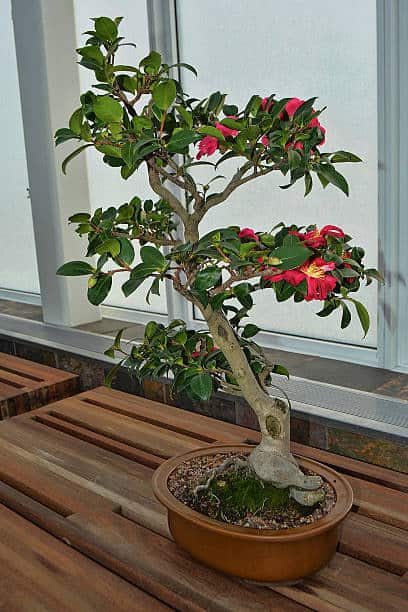
Yes, you can use Camellia Japonica as a Bonsai specimen. Most Camellia species are used for Bonsai specimens and this is because of the obvious reason, they are one flowery plant with attractive dense shiny leaves, which means it can be used for aesthetic purposes. Camellia japonica is one of the most popular Camellia species widely used for Bonsai.
Is Camellia japonica easy to Bonsai?
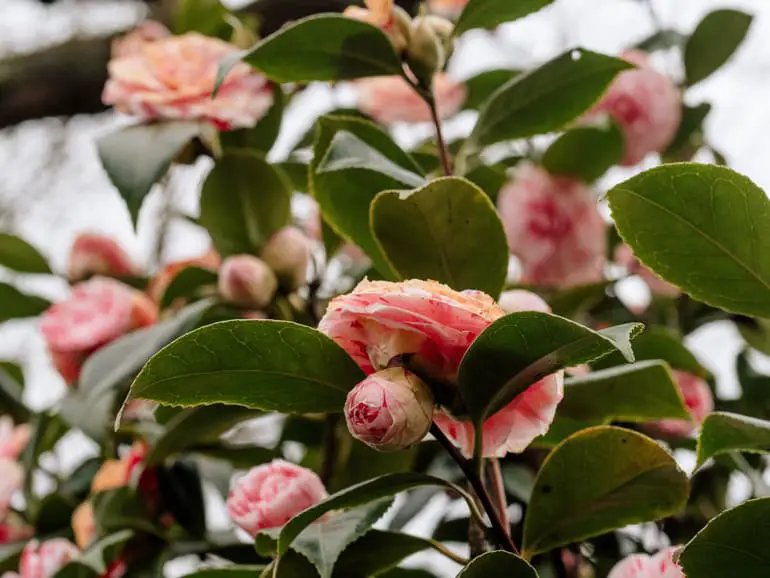
Yes, Camellia japonica is easy to Bonsai. Camellia japonica is very easy to train as a Bonsai specimen as it requires a moderate level of maintenance to cultivate from a very young age to maturity. However, Camellia Bonsai is often not recommended to inexperienced horticulturists or Bonsai tree lovers as they tend to exhibit slow growth which may cause the beginner to give up before the tree reaches maturity.
Camellia tree Bonsai history
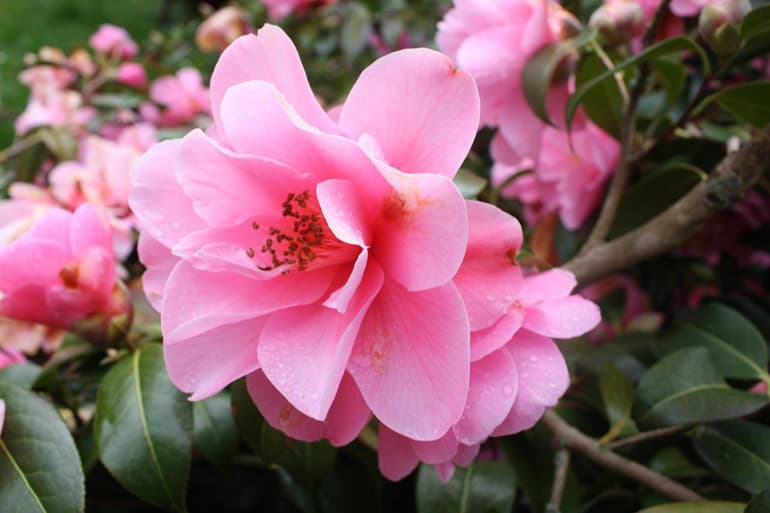
The Camellia tree Bonsai has been in existence in China since about 2737 BC before it was later introduced to the west (Uk and USA) from Japan and China. Although there’s no empirical evidence stating the total amount of trees in the Camellia genus, it is believed that there are about 100 species and 3000 hybrids of the tree all over the world. However, the most popular species is the Camellia japonica known as the Japanese camellia. The tree is also called the Rose of winter or the Japanese Rose.
The word Camellia is a Latin word that means ‘helper to the priest’, and the genus of the tree was named after George Joseph Kamel (Kamel was Latinized as Camellias during the time), a 17th century Moravian Jesuit and botanist who collected the tree (Camellius) from the Philippines island in 1639. Camellia is called under different names in different countries: Tsubaki (Japan), hoa chè or hoa trà (Vietnam), Chachua (China), and known as dongbaek-kkot in South Korea.
In Japan, the Camellia is of cultural significance to the Japanese and this is so evident in most of their ancient texts. In China, on the other hand, Camellia is seen as the symbol of the union of two lovers. While in South Korea, it stands for the symbol of longevity. The tree also holds some significance in the west as the Camellia flower was named in the year 1959 by the state of Alabama as her official flower.
Camellia Bonsai scientific name
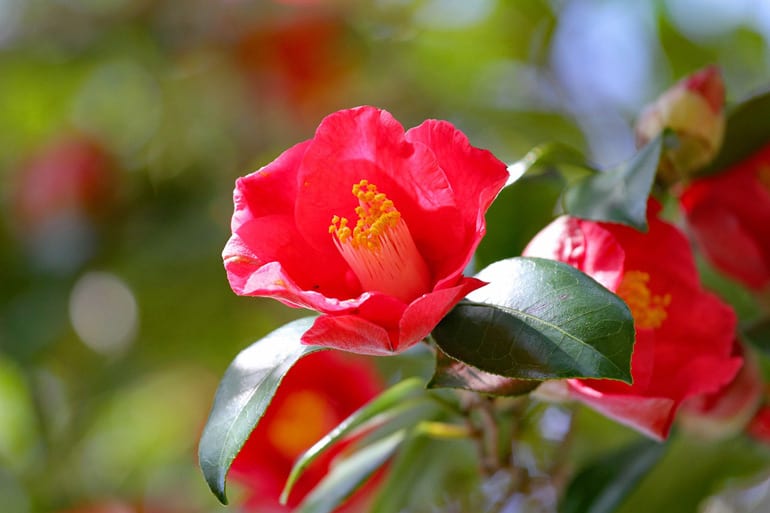
The scientific name for Camellia Bonsai is Camellia japonica
Is Camellia japonica evergreen?
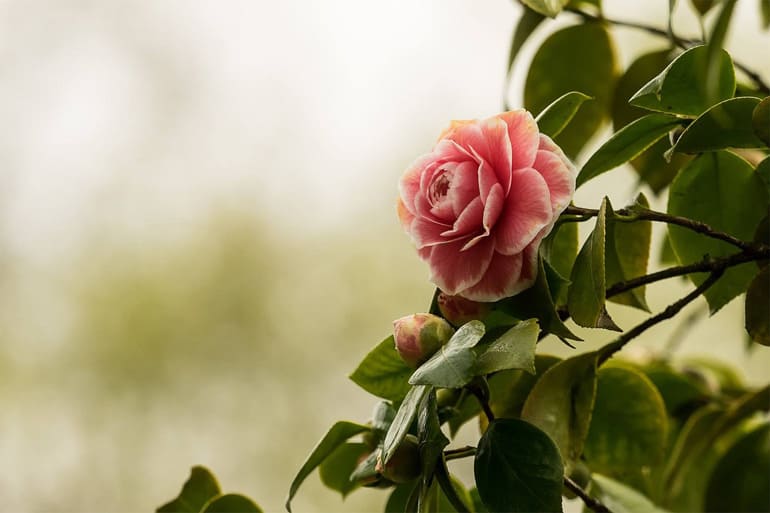
Yes, Camellia japonica is an evergreen plant. Camellia japonica retains its leaves all through the year and seasons, so it is safe to consider it an evergreen plant.
Is Camellia japonica fragrant?
Yes and no, and here’s my reason.
Under Camellia japonica, we have several other cultivars, while some of these other species have fragrance, some don’t which means not all japonica is fragrant. Some of the Japonica variants with fragrant include, krama’s supreme, Herme, spring sonnet, scentsation, and many others.
Camellia Bonsai tree care
Before you can successfully raise your Camellia tree as Bonsai, you have to provide the tree with adequate care requirements which are germane to the termination and survival of the tree altogether. These care requirements are explained in detail in succeeding sections.
Camellia Bonsai temperature
Of all the Camellia tree species, the Camellia japonica is one of the hardest and can withstand a temperature level of -30°C without any damage whatsoever to the tree. However, if the temperature remains at -12°C for a prolonged period, shade it or move it to a frost-free environment.
Camellia Bonsai fertilizer
I believe it would be better to start this with a note of warning! Do not fertilize your Camellia Bonsai when it is in its flowering season (usually around December to January). Apply a fertilizer that is very rich to the plant once during spring immediately after the end of its flowering period.
In late summer, feed your Camellia tree Bonsai with fertilizer low in Nitrogen content or you can make use of a special acid feed that is specially made for Camellia, Azalea, and Hydrangea plants.
Also, you can make use of either solid organic or liquid fertilizer. The organic fertilizer should be applied only once a month, while the liquid fertilizer should be applied every 3 weeks. Some experts even suggest that Camellia Bonsai will benefit from feeding them with compost made from their flowers.
Camellia Bonsai pruning
Prune back branches that have stopped growing during spring. Your camellia Bonsai will not stop growing new leaves, so it is important that you cut the leaves as well. The upper branches of the tree are usually dense with strong leaves, cut these leaves to give leaves on the lower branches access to sunlight so that they can also grow and ensure uniform growth. However, while going about this, do it as moderately as possible because Camellia Bonsai cannot handle heavy pruning.
All faded, or wilted flowers should be removed from the free regularly so that the energy of the plant can be redirected and encourage improved flowering. Then follow it up by cutting back 1 or 2 buds. Once you notice any new shoots, pinch back their tips. You should stop pinching back new shoots from midsummer to early fall so that you don’t end up killing healthy shoots that will bloom in the spring.
Camellia Bonsai wiring
To wire your Camellia Bonsai, make use of raffia-protected aluminum or copper wire. It is important to make use of any of these wires because the bark of a Camellia tree is very sensitive and if wiring is done without the necessary precaution, your tree may suffer from marks or scarring that may take years to heal. This method has proven to be very effective on trees with sensitive branches.
The best time to wire your Camellia Bonsai tree is during winter. If the wiring is properly done, you can leave them on for a couple of years without any damage to your tree. However, do not be too relaxed though because even at that, you are still expected to check on the tree on regular basis for any damages to the brittle branches which could later affect the smooth growth of your tree.
Camellia Bonsai repotting
Repot your Camellia Bonsai once in 2 or 3 years and the best time to do this early spring is right after the tree’s booming time. You can also repot the tree between mid-summer and spring.
The tree should be transplanted together with the soil in the old container. You can also prune the roots, especially the ones that seem to be longer than the others. You can do this with scissors. You must prune the roots to prevent them from absorbing excess moisture. Prune about 25% of the total root mass of the tree.
Before transplanting into a new pot, put a screen above the drainage hole of the new pot, then put a thin layer of gravel and fresh soil on the screen. Do not leave out any air pockets while transplanting the tree and once you are done with repotting make sure to wet the soil. You can even go extra by adding a coat of moss, granite, or quartz to the topsoil.
Make use of acidic compost containing peat, sharp sand, and loam in the ratio of 1:1:2 while repotting. Refrain from using alkaline compost as this could cause the leaves to turn yellow which may eventually kill your tree.
Camellia Bonsai pest and diseases
Camellia Bonsai is very resilient to most insect and pest infestations especially when they are properly maintained and adequately fed with crucial nutrients necessary for their growth. Nonetheless, Camellia Bonsai are not entirely insect, pest-free as they are vulnerable to attacks from moths and vine weevils. When repotting your tree, check the compost very well and water it with beneficial roundworms during late spring.
Another infection common to Camellia Bonsai is sooty mold which usually develops in the honeydew produced by aphids. This infection can be remedied by misting the leaves of the tree regularly. Or by applying systemic insecticide.
Camellia Bonsai soil
It is best to plant Camellia Bonsai in soil with these qualities: organic, acidic, semi-moist, and well-draining.
Camellia Bonsai watering
Water your Camellia japonica regularly to encourage smooth and healthy growth. Make sure the soil never completely drys out and water it more during summer. During winter, you don’t have to get it as much, all you have to do is to keep it moist to keep the bud from dropping.
Do not wet your Camellia plant with hard water, instead make use of neutral or slightly acidic rainwater. Lastly, you should know that watering during the blooming period of the tree is not advisable as it can cause the flowers to wither.
Camellia Bonsai sunlight requirement
Place your Camellia Bonsai tree in an area within the house with proper ventilation where it can be exposed to direct sunlight in the morning and shade your tree in the afternoon.
Camellia cypress Bonsai winter care
Make sure to prevent the tree from frost during winter and put it in a cool area of about 40° to 60°F. This will encourage the tree to flower and give it some time to rest before the growing season.
Camellia tree Bonsai types
There are about 100 to 3000 species of the Camellia tree, however, only a few are used for Bonsai. In sub subsequent sections, you will find information about the few selected Bonsai species that are used for Bonsai. Read on!
Camellia Sasanqua Bonsai
Camellia Sasanqua is one of the many species of the Camellia family. It is a flowering evergreen shrub that blooms around late summer to early spring. The tree requires full sun to part shade and protection from dry wind during winter to survive. It makes an excellent choice for Bonsai and will make your Bonsai garden colorful.
Camellia sinensis Bonsai
The Camellia sinensis is also known as the tea Camella is a hardy evergreen shrub widely cultivated around the world for the production of caffeinated tea. The tree is hardy to USDA zone 6 and is considered to be a slow-growing plant but easily maintained.
Camellia hot flash Bonsai
The Camellia’s hot flash is an evergreen shrub that is distinctively identified with the shiny dark green foliage it displays all year round. The tree also has light red semi-doubled flowers with a yellow stamen that attracts butterflies. The hot flash Camellia is best raised in well-draining soil and blossoms richly when partially shaded.
Are Camellia japonica roots invasive?
No, Camellia japonica does not have an invasive root. The root of Camellia japonica is not invasive, but rather, it has a root system that grows in the thick mat and is about the dimension of the tree canopy. Camellia sends its root deep into the soil to give the tree a firm grip. Keep your Camellia japonica in check by pruning it regularly.
Where do Camellias like to be planted?
Camellias grow best in areas with dappled or full shade. Planting Camellias in a place with the full sun can impact negatively the flower bud. Camellias don’t like sunny areas or a position directly facing the south.
Do Camellia bushes have thorns?
No, Camellia bushes do not have thorns.
Will Camellias grow in Oklahoma?
Yes, Camellias will grow in Oklahoma. There are many cultivars of Camellias Wylie gardens Tusla where they have been in cultivation for almost 5 years so it is not impossible to see them grow in the area.
How long do Camellias live?
Camellias are long-lived plants and can live for more than a century.
Do Camellia Bonsai like full sun or shade?
Camellia Bonsai favors shade more.
Can Camellia japonica grow in shade?
Yes, Camellia japonica will grow in shade. The ideal position to place your Camellia japonica is an area where it can be exposed to direct sun.
Which Camellia is best for shade?
Camellia sasanqua as it believed to be the most tolerant to heat, humidity, and deep shade.
What are the balls on my Camellia plant?
The balls on your Camellia plant are the seeds and you can keep them for your next Bonsai specimen.
How tall does Camellia grow?
Camelia can grow as tall as 6 to 15fts. Although there are other species of the tree with shorter heights of about 2ft and some can be as tall as 20 to 25ft when fully matured.
When to transplant Camellia Japonica?
The best time to transplant your Camellia japonica is during Autumn. Or better still, you can wait until it finishes flowering. Whatever time you choose, you should water the tree for some days before you start transplanting.
When do Camellia japonica bloom?
Camellia japonica will start to bloom from October to the middle of March.
![Pittosporum Bonsai [Pittosporum Tobira]](https://www.bonsai-express.com/wp-content/uploads/2022/05/Pittosporum-Bonsai-365x200.jpg)
![Sorbus Bonsai [Sorbus Aucuparia]](https://www.bonsai-express.com/wp-content/uploads/2022/05/Sorbus-Bonsai-365x200.jpg)
![Tsuga Bonsai [Tsuga Canadensis]](https://www.bonsai-express.com/wp-content/uploads/2022/05/Tsuga-Bonsai-365x200.jpg)
![Tamarix Bonsai [Tamarix Ramosissima]](https://www.bonsai-express.com/wp-content/uploads/2022/05/Tamarix-Bonsai-365x200.jpg)